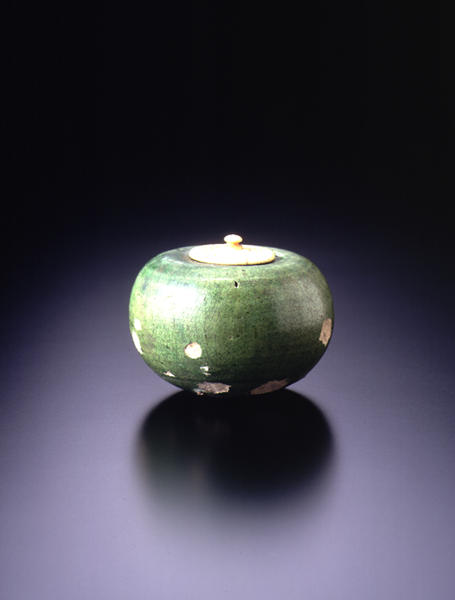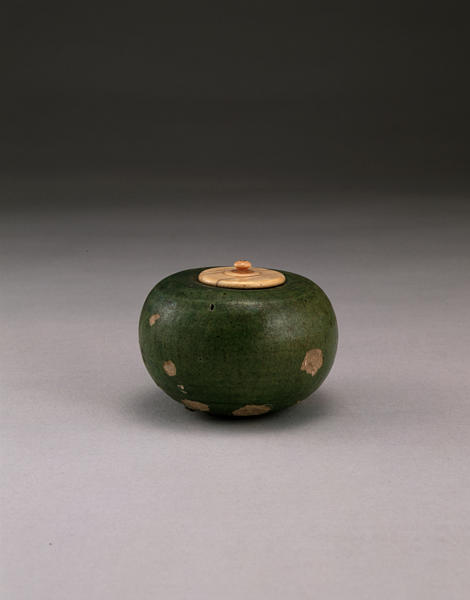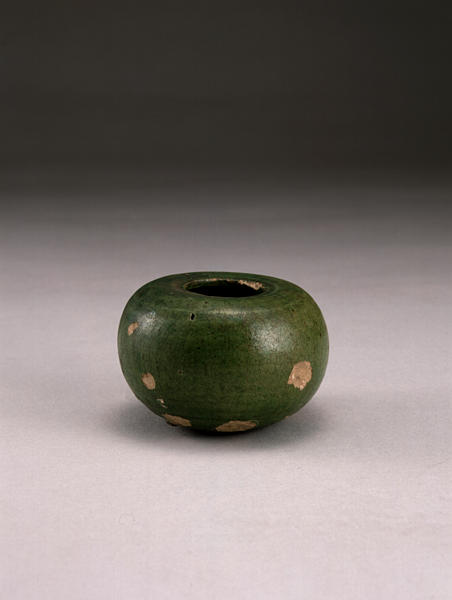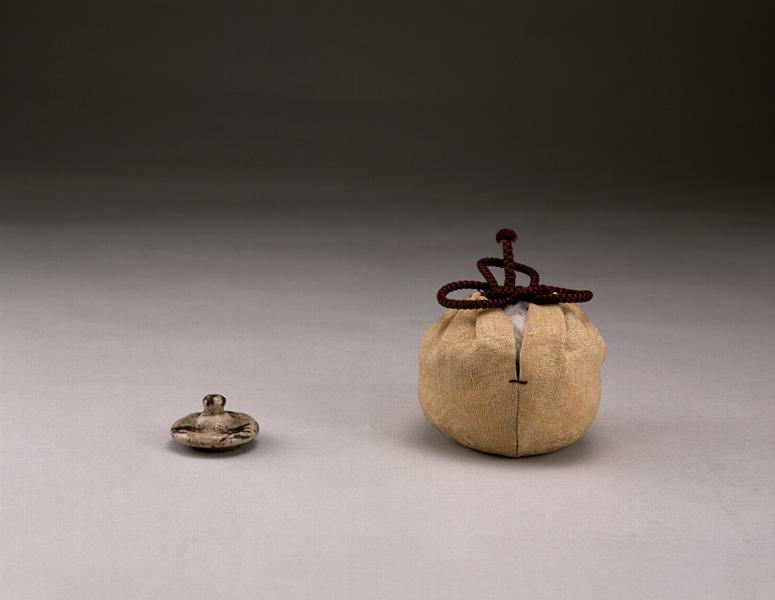緑釉茶入 銘 青柿
- 中国・唐時代
- 8c
- 緑釉陶製
- H-4.2 D-6
解説(春の玉手箱)
この小壺は端正な轆轤挽きで、口はかっきりと垂直に落ちており、丁寧な成形である。緑釉は内側にも掛けられ、口元の濃い釉と胴の良く溶けた釉が、何とも言えない深い味わいを醸し出している。底の所々に白っぽい胎土が露出している。
長安県南里王村から、形や口造り、大きさがほぼ同じで、口径のやや小さい紅入れの合子が出土しており、本作品も同じ目的で作られたものと思われる。いつ日本に渡ったかは不明だが、内側の一部に薄く土の取れない個所があり、一度は土中したものと思われる。
現在は茶入に見立てられており、丸々と張った豊かな形がいかにも生気に満ちた果実を思わせるこの器は、「青柿」の銘で呼ばれている。
箱の蓋裏に「渋茶渋柿不一ふ二瓦礫洞人識」とあり、洞人石田茂作氏の遊び心、面目躍如たるものがある。宝珠の先を象った志野織部の蓋と、象牙の蓋が添っている。
Catalogue Entry
This small jar was symmetrically formed on the wheel and its mouth has been cut vertically in careful finish. Glaze has also in applied to the interior of the jar. The thick glaze at the base of the mouth and the torso has thoroughly melted on the surface, creating a true sense of depth. The white body clay shows here and there on the bottom.
A small jar used as a cosmetics jar with almost the same shape, formation, size and mouth diameter as this jar has been excavated in Chang'an province, and it is thought that this Miho jar was also originally used as a cosmetics jar. It is not clear when this jar came to Japan, and from the sections of stubborn, but light, dirt staining on the interior, it would seem that this jar was buried at one point in its history.
Today this jar is used as a chaire tea container for the tea ceremony, and its round swelling, lively form reminiscent of fruit inspired its name, "Aogaki," or "green persimmon."
The interior of the lid of the box is inscribed with a reference to astringent tea and astringent persimmons by its former owner Dojin Ishida Mosaku. We can get a sense of Ishida's playful spirit from his sprightly, punning phrasing. Today this jar is fitted with two separate lids, one made of Shino Oribe ware with a jewel‐shaped finial and the other from ivory.



